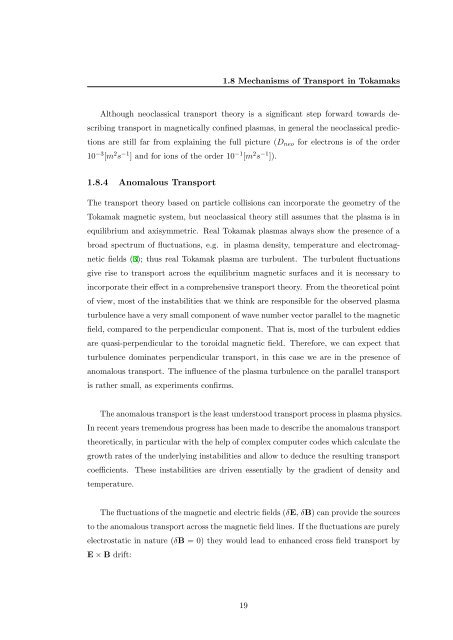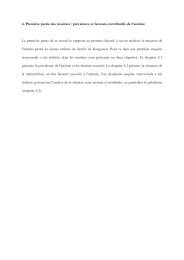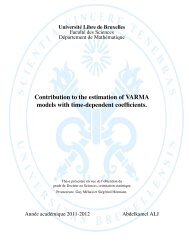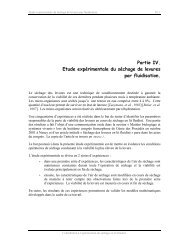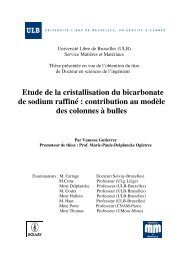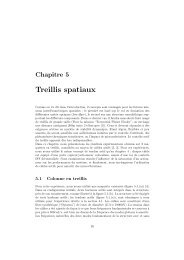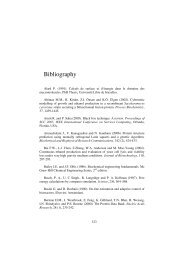PhD and MPhil Thesis Classes - Université Libre de Bruxelles
PhD and MPhil Thesis Classes - Université Libre de Bruxelles
PhD and MPhil Thesis Classes - Université Libre de Bruxelles
You also want an ePaper? Increase the reach of your titles
YUMPU automatically turns print PDFs into web optimized ePapers that Google loves.
1.8 Mechanisms of Transport in TokamaksAlthough neoclassical transport theory is a significant step forward towards <strong>de</strong>scribingtransport in magnetically confined plasmas, in general the neoclassical predictionsare still far from explaining the full picture (D neo for electrons is of the or<strong>de</strong>r10 −3 [m 2 s −1 ] <strong>and</strong> for ions of the or<strong>de</strong>r 10 −1 [m 2 s −1 ]).1.8.4 Anomalous TransportThe transport theory based on particle collisions can incorporate the geometry of theTokamak magnetic system, but neoclassical theory still assumes that the plasma is inequilibrium <strong>and</strong> axisymmetric. Real Tokamak plasmas always show the presence of abroad spectrum of fluctuations, e.g. in plasma <strong>de</strong>nsity, temperature <strong>and</strong> electromagneticfields (3); thus real Tokamak plasma are turbulent. The turbulent fluctuationsgive rise to transport across the equilibrium magnetic surfaces <strong>and</strong> it is necessary toincorporate their effect in a comprehensive transport theory. From the theoretical pointof view, most of the instabilities that we think are responsible for the observed plasmaturbulence have a very small component of wave number vector parallel to the magneticfield, compared to the perpendicular component. That is, most of the turbulent eddiesare quasi-perpendicular to the toroidal magnetic field. Therefore, we can expect thatturbulence dominates perpendicular transport, in this case we are in the presence ofanomalous transport. The influence of the plasma turbulence on the parallel transportis rather small, as experiments confirms.The anomalous transport is the least un<strong>de</strong>rstood transport process in plasma physics.In recent years tremendous progress has been ma<strong>de</strong> to <strong>de</strong>scribe the anomalous transporttheoretically, in particular with the help of complex computer co<strong>de</strong>s which calculate thegrowth rates of the un<strong>de</strong>rlying instabilities <strong>and</strong> allow to <strong>de</strong>duce the resulting transportcoefficients. These instabilities are driven essentially by the gradient of <strong>de</strong>nsity <strong>and</strong>temperature.The fluctuations of the magnetic <strong>and</strong> electric fields (δE, δB) can provi<strong>de</strong> the sourcesto the anomalous transport across the magnetic field lines. If the fluctuations are purelyelectrostatic in nature (δB = 0) they would lead to enhanced cross field transport byE × B drift:19


